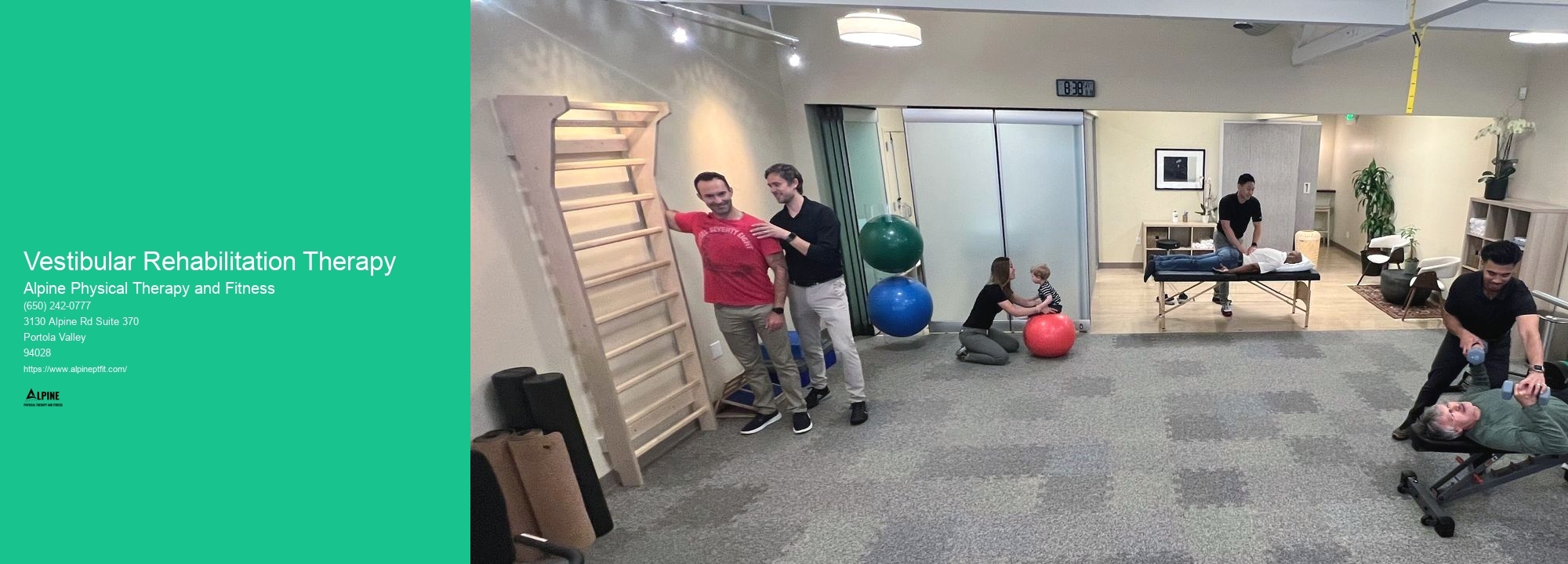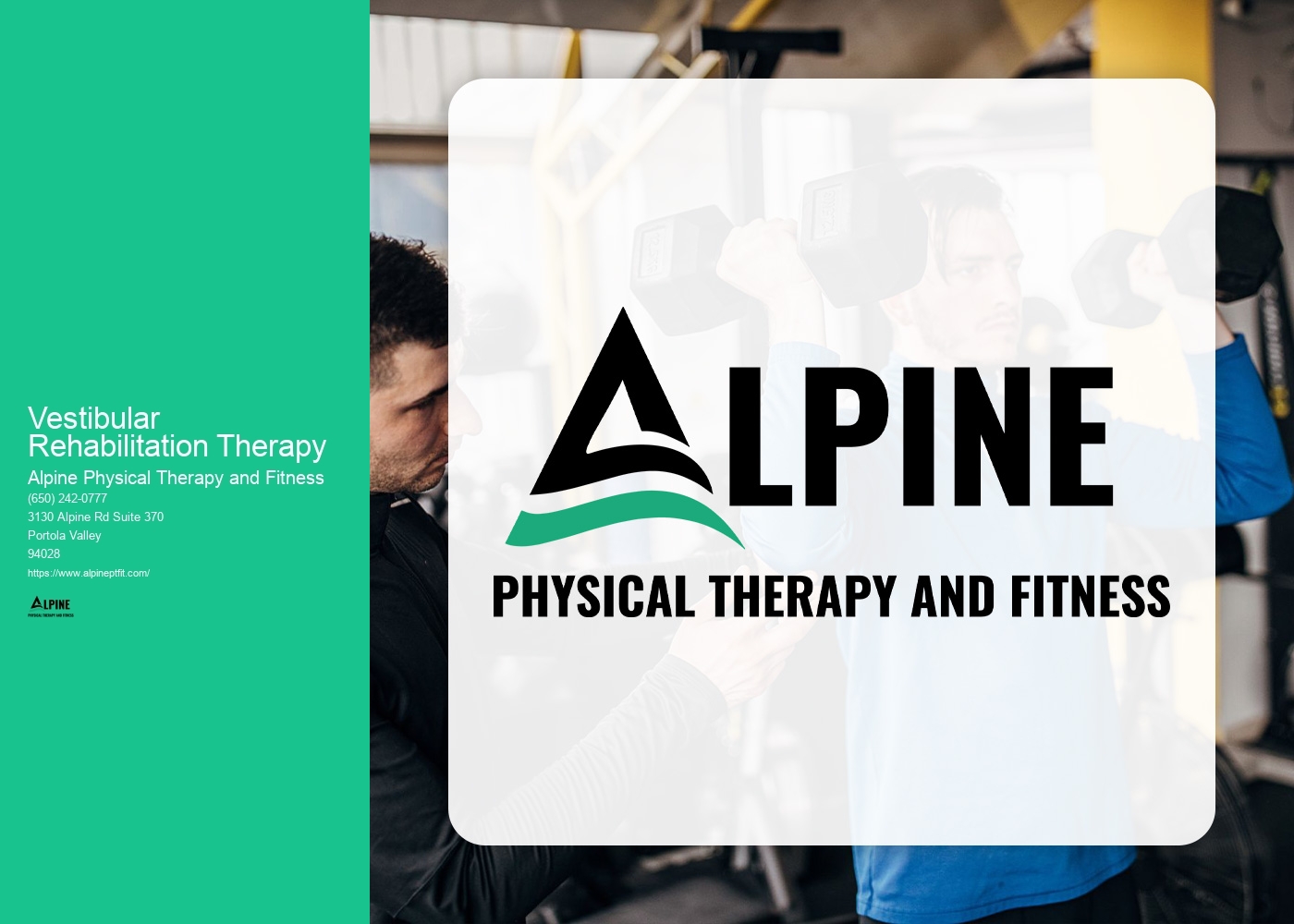

Vestibular rehabilitation therapy (VRT) is a specialized form of physical therapy that focuses on treating balance and dizziness disorders. It is designed to help individuals who have problems with their vestibular system, which is responsible for maintaining balance and spatial orientation. VRT involves a series of exercises and techniques that aim to improve the function of the vestibular system and reduce symptoms such as dizziness, vertigo, and unsteadiness.
VRT helps with balance and dizziness by targeting the underlying causes of these symptoms. The exercises and techniques used in VRT are tailored to each individual's specific condition and symptoms. They may include gaze stabilization exercises, balance training, habituation exercises, and coordination exercises. These exercises help to retrain the brain to compensate for any deficits in the vestibular system, improve balance, and reduce dizziness and vertigo. By gradually exposing individuals to movements and situations that trigger their symptoms, VRT helps them to become more confident and less reliant on compensatory strategies.
Vestibular rehabilitation therapy can be used to treat a range of conditions that affect the vestibular system. These include benign paroxysmal positional vertigo (BPPV), vestibular neuritis, labyrinthitis, Ménière's disease, and post-concussion syndrome. It can also be beneficial for individuals who have balance problems due to aging, inner ear damage, or other neurological conditions. VRT is typically recommended for individuals who have persistent or recurrent symptoms that significantly impact their daily functioning and quality of life.

The specific exercises and techniques used in vestibular rehabilitation therapy depend on the individual's condition and symptoms. Some common exercises include eye-head coordination exercises, balance exercises such as standing on one leg or walking on uneven surfaces, and habituation exercises that involve repeated exposure to movements that provoke dizziness or vertigo. Other techniques may include manual therapy, such as canalith repositioning maneuvers for BPPV, and education on lifestyle modifications to manage symptoms.
The duration of vestibular rehabilitation therapy varies depending on the individual's condition and progress. In general, treatment may last for several weeks to several months. The frequency and duration of therapy sessions are typically determined by the therapist based on the individual's needs and progress. It is important to note that VRT is a gradual process, and improvement may take time. Regular practice of the prescribed exercises and techniques is essential for achieving optimal outcomes.

Vestibular rehabilitation therapy is generally considered safe and well-tolerated. However, like any form of physical therapy, there may be some risks or side effects associated with VRT. These can include temporary increase in dizziness or vertigo during or after the exercises, muscle soreness, fatigue, or headache. It is important for individuals undergoing VRT to communicate any concerns or adverse effects to their therapist, who can make appropriate adjustments to the treatment plan.
Vestibular rehabilitation therapy has been shown to be effective in improving symptoms and functional outcomes for individuals with balance and dizziness disorders. Research studies have demonstrated that VRT can lead to significant reductions in dizziness, vertigo, and unsteadiness, as well as improvements in balance and quality of life. The effectiveness of VRT may vary depending on the individual's condition, adherence to the treatment plan, and other factors. It is important to consult with a healthcare professional to determine if VRT is appropriate and to receive personalized guidance and support throughout the therapy process.

There are several targeted exercises that can be beneficial for improving fine motor skills in children with autism. These exercises focus on developing hand-eye coordination, finger dexterity, and overall control of small movements. Some examples include using playdough or clay to mold shapes and objects, practicing cutting with scissors to enhance precision and control, engaging in activities that involve picking up small objects with tweezers or tongs, and using puzzles or building blocks to promote manipulation and manipulation skills. Additionally, activities such as drawing, coloring, and writing can also help improve fine motor skills in children with autism. It is important to tailor these exercises to the individual needs and abilities of each child, and to provide a supportive and encouraging environment to foster their progress.
Aquatic therapy offers numerous benefits for individuals with spinal cord injuries. The buoyancy of water reduces the impact on the joints and spine, allowing for increased mobility and range of motion. The resistance provided by the water helps to strengthen muscles and improve overall strength and endurance. Additionally, the hydrostatic pressure of the water can help to reduce swelling and improve circulation. Aquatic therapy also provides a safe and supportive environment for individuals with spinal cord injuries to work on balance, coordination, and functional activities. The calming and relaxing nature of water can also help to reduce pain and promote a sense of well-being. Overall, aquatic therapy is a highly effective and enjoyable form of rehabilitation for individuals with spinal cord injuries.
Physical therapy plays a crucial role in addressing balance issues in older adults. Through a comprehensive assessment, physical therapists identify the underlying causes of balance problems, such as muscle weakness, joint stiffness, or impaired proprioception. They then develop personalized treatment plans that incorporate a range of exercises and interventions to improve balance and stability. These may include strength training exercises to target specific muscle groups, balance training exercises to enhance proprioception and coordination, and gait training to improve walking patterns. Additionally, physical therapists may utilize assistive devices, such as canes or walkers, to provide support and enhance safety during mobility. By addressing the root causes of balance issues and implementing targeted interventions, physical therapy helps older adults regain their balance, reduce the risk of falls, and improve their overall quality of life.
The principles of rehabilitation for a baseball pitcher with shoulder issues involve a comprehensive approach that focuses on restoring strength, flexibility, and stability to the shoulder joint. The rehabilitation program typically includes a combination of exercises, manual therapy techniques, and modalities such as heat or ice therapy. Specific exercises may include rotator cuff strengthening exercises, scapular stabilization exercises, and range of motion exercises. It is important to gradually progress the intensity and volume of the exercises to avoid overloading the shoulder. Additionally, proper throwing mechanics and technique should be emphasized to prevent further injury. The rehabilitation process may also involve addressing any underlying biomechanical issues or muscle imbalances that may have contributed to the shoulder issues. Overall, the goal of rehabilitation is to not only alleviate pain and restore function but also to prevent future injuries and optimize performance.